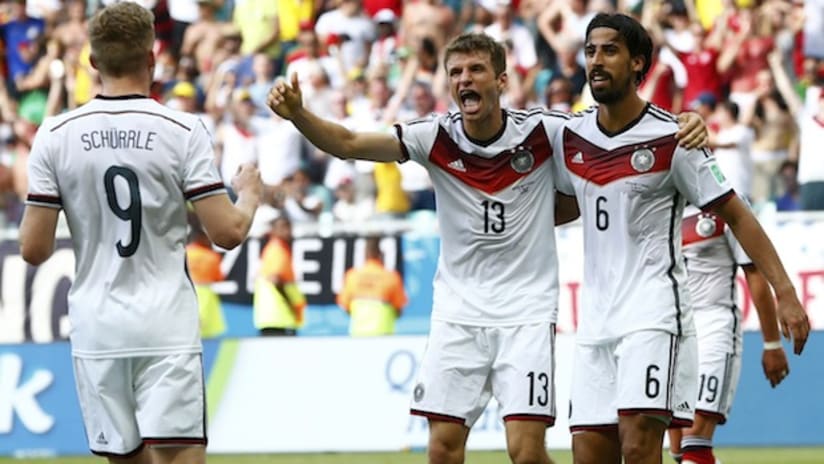EDITOR'S NOTE: This interview was completed prior to the first game of the 2014 FIFA World Cup.
With the United States Men's National Team ready to kick off the 2014 FIFA World Cup next week, SportingKC.com will be taking a look at each of their Group G opponents with some help from Matt Tomaszewicz (aka the Shin Guardian). Today, we'll look at European side Germany, who will face the USA on June 26 at Arena Pernanbuco in Recife, Brazil.
JF: What are your thoughts on the strength of Germany’s squad?
MT: Thomas Muller and Mesut Ozil are obviously two key players to watch. I’m not a fan of what they did up top. Mario Gomez wasn’t fit, so they didn’t pick him (for the 23-man squad). Now Marco Reus is hurt, so they’re probably looking at Andre Schurrle as their starting forward. (Manager) Joachim Low also has Miroslav Klose, but I still think that’s a big issue for them. They’re a beatable team; they’re not as fit. Toni Kroos has been injured, Bastian Schweinsteiger has been injured, Lahm has been injured. I’m not sure about (goalkeeper) Manuel Neuer’s shoulder. And then, of course, Marco Reus is out.
JF: How can the United States exploit Germany’s weaknesses?
MT: It’s going to be on the flanks. You can say that Germany’s defense is weak, although it has improved in recent games. The question for the U.S. is: how do they manage possession against Germany to create chances? I think they can create chances on the flanks. One of the keys for the U.S. will be the play of Jermaine Jones and Michael Bradley, both defensively and creating. They match up really well with Germany. Scheweinsteiger is a great player but he’s had knee tendinitis and isn’t the same player that he was at the 2010 World Cup. So the big key is how the U.S. midfield performs.
JF: How will the United States approach Germany as compared to the other two opponents in Group G?
MT: If you think about what Jurgen Klinsmann has done, he’s played conservatively and he’s defended the middle of the field. That’s something the U.S. has clearly done better while under Klinsmann. When goals get scored against the U.S., it’s because of a drop in team defense, not a drop in scheme. If you look at the Bob Bradley years and the Bruce Arena years, the U.S. got scored on often because of their aggressive, attacking style. That doesn’t happen now, and that’s why Kyle Beckerman has become a big figure there. The big challenge is how to create chances while also staying defensive.
JF: How likely is it that the United States can get a result against Germany?
MT: Germany is Germany, and they always play well when the chips are down. But this isn’t one of the stronger German sides that I’ve seen. They have a lot of really good players, but they don’t have as many options up front. The United States certainly looks better fitness-wise. One of the questions for the U.S. is can they gel together and can they perform under pressure. Something I like about the U.S. is the defensive partnership of Geoff Cameron and Matt Besler. They’re a lot better on the ball than their counterparts and both of them are fast. They can play a little tighter and close the gap between the midfield and the defense. That’s a real positive for the team.




